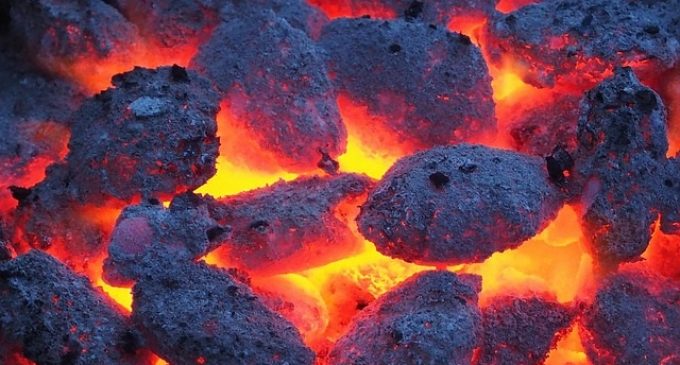Falls in oil, gas, coal and electricity lead to 6% drop in Bord Gáis Energy Index in May

A broad-based fall in oil, gas, coal and electricity in May led to the Bord Gáis Energy Index falling by 6% during the month. The main influencers were a 6% fall in oil prices as OPEC’s production cuts failed to have the desired effect, and a 6% fall in electricity costs. However, year-on-year the Index remains 6% higher.
In May 2017, the Bord Gáis Energy Index stood at 88 compared to 92 in April 2017.
The month of May saw falls in oil, gas, coal and electricity. Oil dropped 6% as the extension of the OPEC production cuts failed to live up to market expectations. Wholesale gas prices were 4% lower, as the supply picture to Europe remains strong and as summer temperatures warm up, which reduces demand. Electricity prices were lower by 6%, in line with lower gas prices, while coal was down by 2%. A stronger euro over the month versus both sterling and the dollar also weighed on prices.
Commenting on the latest Index, Darragh Crowley, Energy Trader with Bord Gáis Energy, said: “The Bord Gáis Energy Index fell again in May as prices across the energy sector dropped again this month. OPEC’s November 2016 agreement has so far failed to halt the slide in oil prices, but the extension to this agreement announced at its end of May meeting could potentially see a reversal in prices later in the year, although this will depend to a large degree on whether the US continues to increase its production.”
“Elsewhere, a reversal in the downward trend is possible as European energy markets are feeling the impact of the escalating row in the Middle East. Wholesale natural gas prices have soared in the past few weeks over uncertainty around gas supplies from Qatar to Europe. The July UK gas futures contract, a source of wholesale gas for Ireland, experienced its highest jump since January as a result, highlighting again how a volatile middle eastern geopolitical climate can have a direct impact on Irish energy prices. Overall, the Index remains 6% up on this time last year.”
Oil
It was another bearish month for the Brent crude benchmark as prices finished the month $1.42 dollars lower at $50.31 a barrel, despite an agreement between OPEC and some key non-OPEC – now colloquially referred to as NOPEC – producers to rollover production cuts agreed at the end of November 2016. The agreement, ratified at OPEC’s May 25th meeting in Vienna, continues to keep 1.8mbd of production out of the market in an effort to eradicate a supply glut which has hung over the global oil market since 2014. The final agreement, however, failed to deliver further cuts, extending the existing agreement until March 2018.
Gas
The NBP day-ahead contract, the price for gas delivered tomorrow, averaged 39.17 pence a therm (p/th) during May, a marginal fall on the previous month’s close of 39.49p but 4% lower in euro terms, as sterling weakened over the month. Wholesale prices remain 14% higher than the comparable period last year.
Prompt gas prices were, on average, steady in May as seasonal temperature-driven demand began to fall as would be expected over the summer months. Early in the month saw the first large production outage of the summer as a large Norwegian processing plant and gas field went down for maintenance. This outage had a limited impact on prices as there was adequate gas in storage and increased gas flows from the North Sea to fill the gap.
On the curve, in contrast to the prompt market, seasonal contracts posted marginal gains. The benchmark Winter ‘17 contract was higher by 0.05p to 45.9p a therm, while the Summer ‘18 contract gained 0.5p to settle at 39.9p. This could be attributed to the crude oil rally in the run-up to the OPEC meeting on May 25th. Gas contracts further out on the curve are less influenced by physical supply and demand factors and can often track other commodities such as oil and coal.
Coal
Coal prices settled the month at $76.55 per tonne, a 2% decrease in euro terms. China’s coal imports dropped as deliveries from Australia were delayed by cyclone damage and the world’s biggest producer and consumer raised production. Imports in May were estimated to be 13% lower than in April. China’s shipments were also affected by rising domestic coal production, which hit a four-month high in April after the government said most suppliers would be exempt from the widespread restrictions introduced last year.
Electricity
The average wholesale price of electricity was lower by 6% in May. Excluding supplier capacity payments, the average wholesale price for May was €42.02/MWh compared to €45.41/MWh in April, a decrease of €3.39/MWh on the average wholesale monthly price.
Irish wholesale electricity prices typically tend to track the cost of imported gas as it is the most significant cost in the production of electricity. However, it can vary on a month-to-month basis.
An average monthly clean spark of approximately €8.44/MWh was recorded in May, which decreased 27% from the €11.49 observed in April. The proportion of demand met by wind in May was 22.6%.
FX
The single currency strengthened over the month, climbing 4% versus the pound and 3% versus the U.S. dollar. The single currency finished the month at 0.8718 versus sterling and 1.1237 versus the dollar. The euro put in a strong performance as a combination of better euro zone economic data and increased uncertainty around U.K. and U.S. economies and politics weighed on the pound and dollar.


























